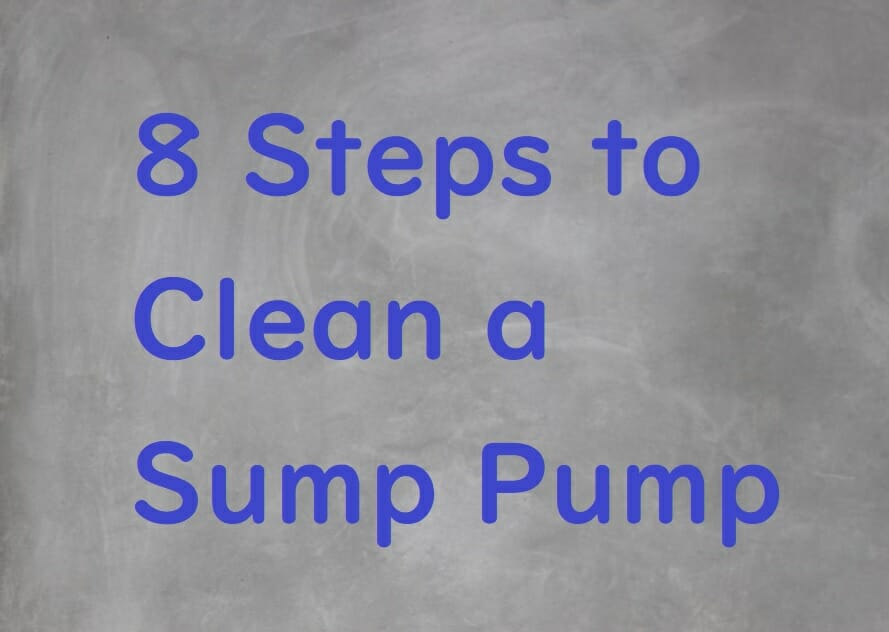The sump pump is your last line of defense between the forces of nature and your home. This key component is located under your basement or a crawl space, and it’s purpose is to collect groundwater and divert it away from your home. If you didn’t have a sump pump a buildup of groundwater could flood through the foundations, causing damage. Flooding damage is expensive to fix, and water can cause a lot of damage in a very short period of time. So, it’s a good idea to clean and maintain your sump pump to keep your homes safe.
Step 1: Gather Your Supplies
Cleaning a sump pump can be a messy process, and the last thing you need is to break off half way through because you need some supplies. To clean your sump pump, you will need some kind of scraping tool, a shop vaccum, a garden hose, and a thick sheet of plastic.
Step 2: Turn the Water Off
It’s not necessary to turn off the water supply to your entire home. Simply turn off the water in any area where a fixture is directly draining into the sump pump. A prime example would be the washing machine. If you cannot turn the water off, ensure that no-one in the home will be using a plumbing fixture while you clean the sump pump. Avoid cleaning the sump pump on a rainy day; you don’t want water draining out of the sump pump as you’re trying to clean it.
Step 3: Turn Off the Power
You can unplug the sump pump from the basement power outlet, and you can switch off the circuit that is supplying power to the pump at the breaker.
Step 4: Wrap the Sump Pump
Wrap the sump pump in the thick plastic sheet and lift it out of the pit without making a mess. It’s likely that you will have dirt and sludge encrusted on the surface of the pump. So, you need to carry it outside to give it a thorough cleaning.
Step 5: Cleaning the Sump Pump
Once you have the sump pump outside, you can use the garden hose to rinse off the surface layer of dirt and grime. Then use your scraping tool to remove harder deposits of dirt and place larger clumps of dirt in the trash. Then use the hose to give the sump pump a final rinse and leave it to dry in the sun.
Step 6: Drain the Check Valve
Return to the sump pit and place the bucket under the check valve where water would normally drain into the sump pump. Open the check valve and let any remaining water drain out for later disposal.
Step 7: Remove the Standing Water
Use the shop vac to remove any remaining standing water that you may see at the bottom of the sump pit. This process will make it easier to re-attach the sump pump later because you don’t want to put your cleaned sump pump back into a dirty pit.
Step 8: Connect the Sump Pump
Take your clean and fresh sump pump and reconnect it to the check valve and discharge pipe. Restore the power, and you’re ready to go.
A clean sump pump will perform more reliably, but if you’re not confident working with plumbing fixtures, contact a
local certified plumber for expert help and advice.
By Giovanni Longo President Flood Brothers Plumbing
Giovanni Longo is a 3rd generation master plumber who has been practicing his craft and trade in the greater Los Angeles area for well over a decade and a half. A plumbing and hydraulics-engineering innovator, Giovanni’s particular world-class expertise focuses on dealing with challenging sewer system designs as well as resolving complex commercial and residential draining issues. As a certified Flood Mitigation expert, he is also well versed in a wide variety of water damage and remediation solution.





